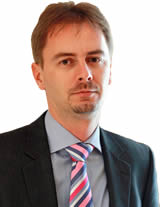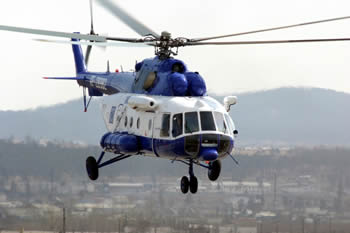|
Having grown 3.5 times since 2004,
Rotorcraft is one of the few industries in Russia to show steady development rates. However, while this growth still relies heavily on sales of military
products, the global demand seems to be taking a shift towards more commercial helicopter utilization.
As a result, in order to remain relevant, Russia needs to develop more commercially attractive
products as well as ensure appropriate support for the current offerings.
Products of Russian Helicopters -
a sole rotorcraft manufacturer in Russia - currently account for over 14% of the global market share. Today
over 8,500 of its machines are operated in more than 100 countries, including Middle East, Africa, Asia-Pacific, Latin America and the CIS. However,
recent trends within the industry might bring about certain challenges that need
to be addressed with maximum caution.
| “It is forecasted that over $60.3bn worth commercial rotorcraft
will be manufactured by 2022
globally," says Anatolij
Legenzov, CEO of Kaunas, Lithuania-based
Helisota.
"Honeywell expects up to 28% of this demand to come from
Europe and the CIS, driven by a global increase in demand for
helicopter use in various growing sectors of the global
economy.
Recent years have seen a stronger dependency on helicopters
for use in oil and gas operations, emergency medical services,
law enforcement and public safety, as well as corporate and
private
air travel.” |
 |
| Anatolij
Legenzov |
Recently more and more experts and industry players have been noticing the shift. For instance, Sikorsky has been experiencing a drop in sales of its Black Hawks and Seahawks for
some time now after over a decade of steadily increasing production rates. At the same time,
over two thirds of the overall fleet of its S-92s are currently operated in commercial
segments.
 |
In the meantime, the growth of Russian Helicopters still relies mainly on military products, as well as medium and heavy-lift machines. In 2013 the manufacturer
produced over 35% of military rotorcraft and 87% of heavy-lift helicopters globally. Here, a noticeable part of operated rotorcraft is still represented by such machines as Mi-8/17 and its different modifications.
However, the capabilities of these products are often excessive for commercial use. |
| Russian
Helicopters' Mi-8/17 |
As a result, operators in Russia and the CIS are increasingly filling the gap with Western-built rotorcraft.
At the beginning of 2014 the overall number of foreign helicopters in the region reached about 590
units - almost twice as much as in 2009.
“Of course, despite the advantages of lighter models in a set of relevant operations, heavy-lift helicopters are yet to demonstrate their indispensability in offshore operations and difficult
weather conditions," continues Legenzov. "Nevertheless, considering the fact that Western manufacturers are renewing their portfolios with regard to new products in this category,
ensuring a place for competitive products in the market should become a top priority for the local manufacturer. And then there’s also the need for replacement of a huge Soviet-era
rotorcraft fleet within the region to keep in mind.”
According to Legenzov, development and manufacturing of new products is only a part of the
answer: Considering the fact that a large share of the Russian-made products is still
mostly operated within post-Soviet countries, development of the relevant maintenance support network worldwide is an important step in ensuring further expansion.
“Here cooperation with an experienced and certified third-party MRO provider is of paramount importance in the quest of maintaining the appropriate level of air safety as well as ensuring a
place in the future of the industry.”
Helisota is an international provider of integrated maintenance, repair and overhaul (MRO) services for rotorcraft aviation. The company is an EASA Part 145 and Part 147 organization as
well as an authorized Mil Helicopters and Robinson R44 service centre. Based on ISO 9001:2008 certified services and products, Helisota supports various government and private
rotorcraft operators from 25 countries worldwide.
|